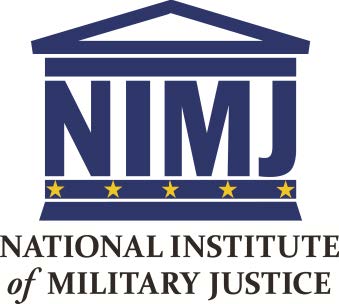|
Update 31052023: See United States v. Jones (AFCCA) regarding an Article 117a offense. United States v. GrijalvaWho said that the "service connection" requirement is dead after Solorio. If dead, Congress may have and the CGCCA has resurrected it for a specific offense--something that Congress could do. Grijalva was convicted of knowingly and wrongfully, without specific consent, sharing nude pictures in fake Tinder account. Grijalva hacked into a friend of a friend's Snapchat account, downloaded nude and other pictures of the friend. He then created a fake Tinder account with the friends name and used her pictures. He promised a meeting with "her" and in the process made $200.00 based on the solicitation. He was charged with an unenumerated offense under Article 134(2). On appeal, he alleged that the charge and specification was preempted by Article 117a. CGCCA disagreed. Appellant was convicted of an unenumerated specification under Article 134, UCMJ, alleging: (1) that he knowingly, wrongfully, and without explicit consent broadcast an intimate visual image of Ms. B.C., who is identifiable from the visual image or from information displayed in connection with the visual image when he knew or reasonably should have known that the visual image was made under circumstances in which Ms. B.C. retained a reasonable expectation of privacy regarding any broadcast and when he knew or reasonably should have known that the broadcast of the visual image was likely to cause harm, harassment, or emotional distress for Ms. B.C. or to harm substantially Ms. B.C. with respect to her safety, business, calling, career, reputation, or personal relationships; and (2) that, under the circumstances, Appellant’s conduct was of a nature to bring discredit upon the armed forces. This embraced all but two of the elements of wrongful broadcast of an intimate visual image under Article 117a, UCMJ: (1) that the intimate visual image involves a person who is at least 18 years of age at the time the intimate visual image was created; and (2) that the accused’s conduct, under the circumstances, had a reasonably direct and palpable connection to a military mission or military environment. The court rehearses the statutory language and legislative history of Article 117a. In doing so, the court concludes that the Article is limited to situations where the victim is another servicemember or veteran. The issue arises over the interpretation of "(4) whose conduct, under the circumstances, had a reasonably direct and palpable connection to a military mission or military environment," in the statute. The statutory language makes clear that Article 117a is tailored to address nonconsensual sharing of intimate images of adults that, “under the circumstances, had a reasonably direct and palpable connection to a military mission or military environment.” Article 117a(a)(4). Legislative history shows that the specific statutory purpose for doing so was to target the sharing/broadcasting of intimate images of servicemembers and veterans without their permission. In Grijalva, the victim was a civilian. With that in mind, the court finds no difficulty in deciding against Grijalva on the preemption argument. But I think the question to be asked of CAAF is more nuanced. Is it arguable that "whose conduct, under the circumstances, had a reasonably direct and palpable connection to a military mission or military environment," is a blending of the second element of an Article 134(1) or (2) offense--conduct prejudicial to good order and discipline and/or service discrediting? The full text of Article 117a states a) Prohibition.-Any person subject to this chapter- The opinion notes that a 2017 DoJ recommended (ltr at 10) the additional element to address First Amendment concerns. DoJ cites to United States v. Wilcox, 66 M.J. 442, 449 (C.A.A.F. 2008). And as part of the discussion suggests that an enumerated offense under Article 134 would be appropriate. That's not in the 2019 manual.
Comments are closed.
|
Disclaimer: Posts are the authors' personal opinions and do not reflect the position of any organization or government agency.
Co-editors:
Phil Cave Brenner Fissell Links
SCOTUS CAAF -Daily Journal -2024 Ops ACCA AFCCA CGCCA NMCCA JRAP JRTP UCMJ Amendments to UCMJ Since 1950 (2024 ed.) Amendments to RCM Since 1984 (2024 ed.) Amendments to MRE Since 1984 (2024 ed.) MCM 2024 MCM 2023 MCM 2019 MCM 2016 MCM 2012 MCM 1995 UMCJ History Global Reform Army Lawyer JAG Reporter Army Crim. L. Deskbook J. App. Prac. & Pro. CAAFlog 1.0 CAAFlog 2.0 Archives
July 2024
Categories
All
|


 RSS Feed
RSS Feed